The Pantheon is one of the most beautiful and fascinating Roman buildings, and today still remains a masterpiece of engineering: Its round shape and balanced and harmonious architecture still affect thousands of visitors every day, nearly 2,000 years after its construction.
The Pantheon inspired the greatest architects of the Renaissance, so much that Raphael wanted to make it his eternal resting place, and Michelangelo considered it the work of angels and not men.
Stendhal said of the Pantheon, “It’s the most beautiful relic of Roman antiquity.”
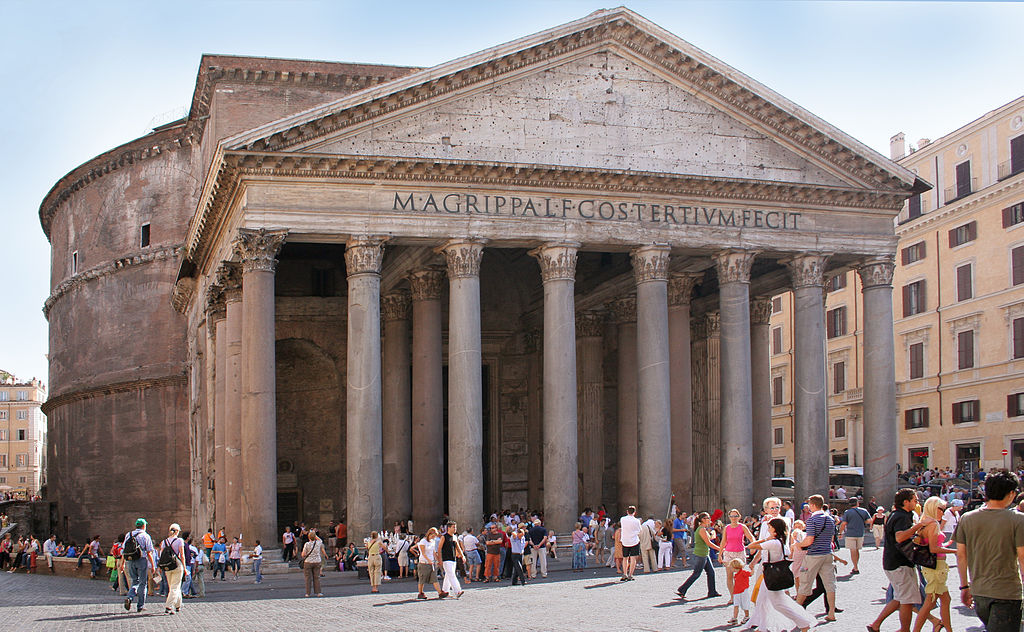
Photo credits: Roberta Dragan.
A Brief History of the Pantheon
Originally the Pantheon was built by Agrippa between 27 and 25 BC and he dedicated it to the worship of all the Olympians. The word “Pantheon” in fact comes from the Greek and literally means (temple) “of all Gods” (“pan” = “all” and “theon” = “divine”).
However, Agrippa’s original construction was damaged by two fires, in 80 A.D. and 120 A.D. and was completely rebuilt by Emperor Hadrian between 118 and 125 A.D., preserved substantially intact to this day.
Hadrian remembered Agrippa with an inscription on the lintel, which is still clearly visible: “M. Agrippa L. F. Cos. Tertium fecit.” The inscription translates to: “Built by Marcus Agrippa, son of Lucius, the year of his third Consulate.”
In 608 A.D., the Pantheon had passed officially to Christianity, when Pope Boniface IV had the bones of many martyrs taken from the Christian catacombs placed inside. This pagan temple was thus converted into a Christian basilica, called Santa Maria ad Martyres.
Do you want to see how the Pantheon was in the past compared to its present state? Use our tool below.
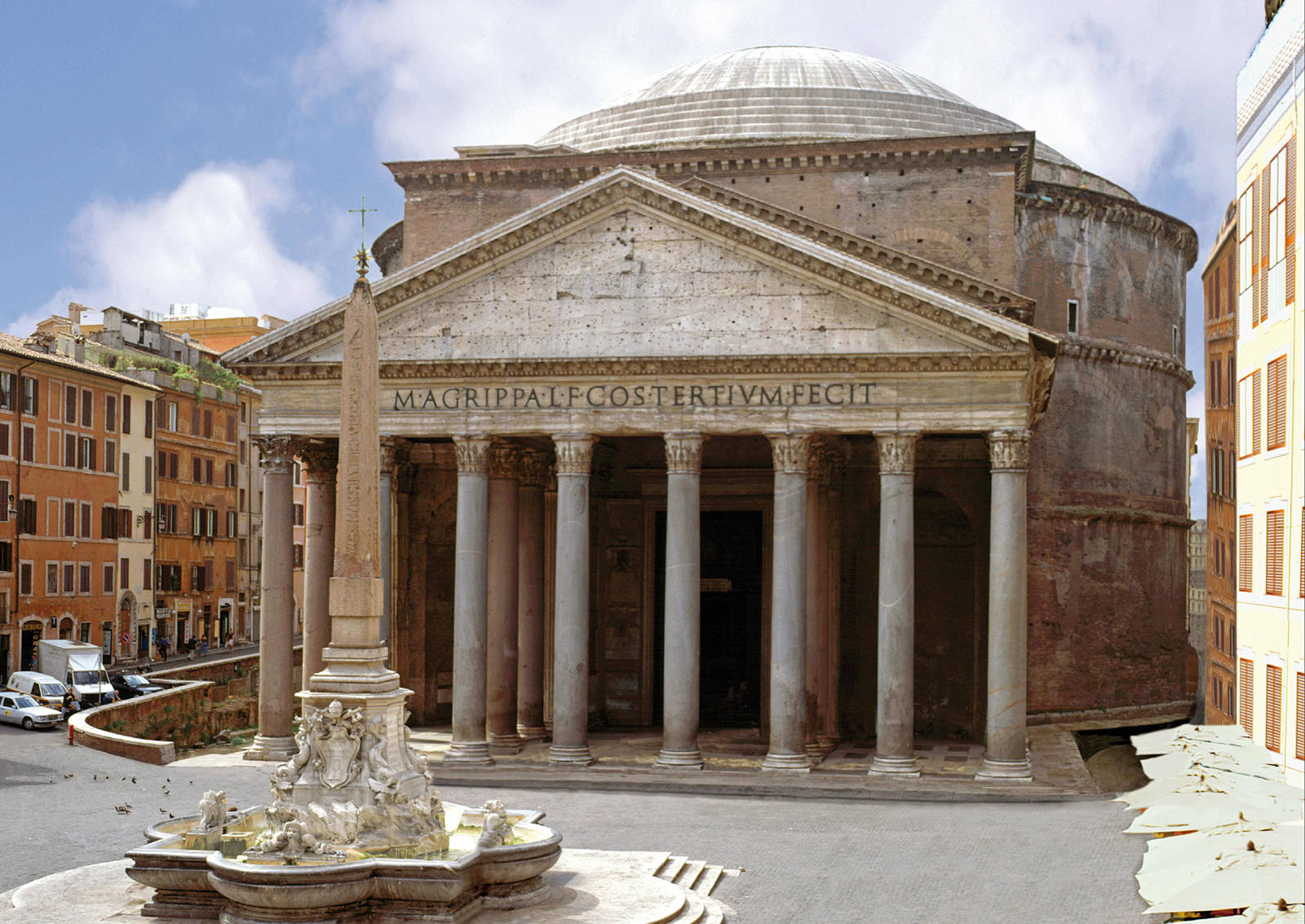
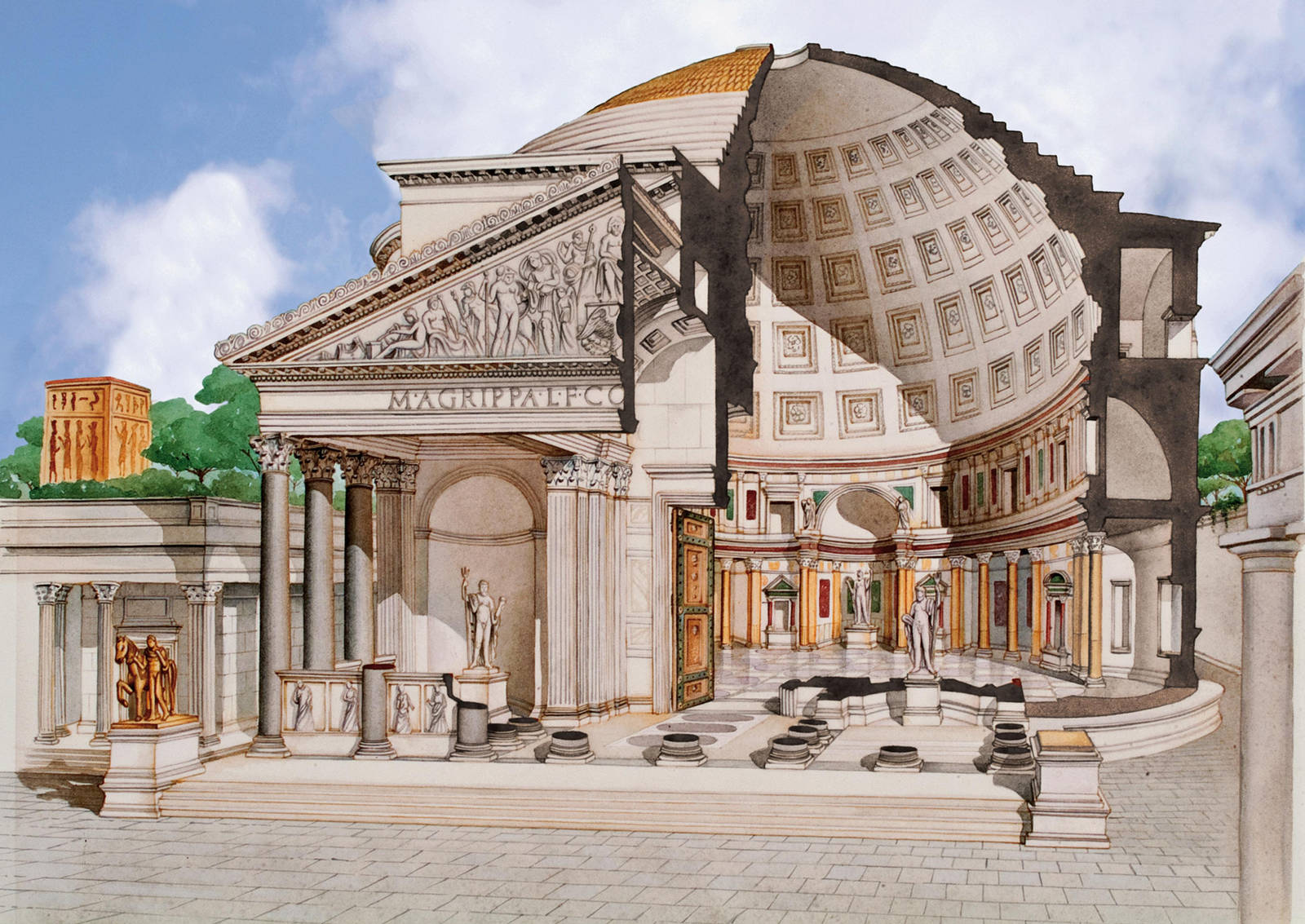
Photo credits: Vision – Past & Present
Curious facts about the Pantheon
Here are some curious facts about the Pantheon:
1) The dome of the Pantheon, with a diameter of 43.30 meters, still remains the largest dome in the world, surpassing both the dome of St. Peter (diameter 42.52 m) and the dome of Brunelleschi in Florence (lower diagonal 41.47 m) .
2) The inside of the dome is decorated with five rings of twenty-eight coffers, or sunken panels; twenty-eight was a number that the ancients considered perfect, since it’s obtained from the sum 1 + 2 + 3 + 4 + 5 + 6 + 7 and seven is a number that represents perfection, because seven planets are visible to the naked eye.
3) The diameter of the chamber is 43.30 meters and is equal to the height of the building; its interior could therefore contain a perfect sphere.
4) The pronaos of the Pantheon (ie: the front, preceding the entrance) consists of 16 columns, made of pink and gray granite quarried in Egypt.
5) Inside the Pantheon are the tombs of the first two kings of Italy, Vittorio Emanuele II and his son Umberto I.
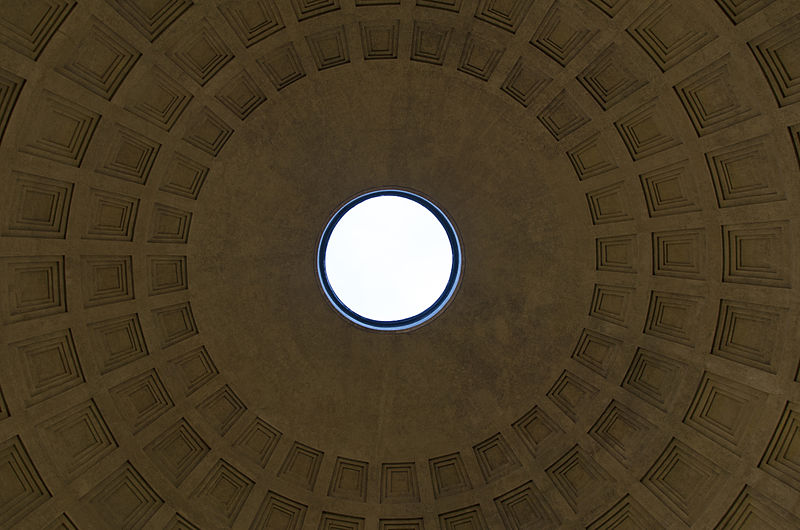
Photo credits: Livioandronico2013
When it rains, does water enter the hole in the roof of the Pantheon?
The most frequently asked question about the Pantheon continues to be, if it rains inside, through the hole in the roof. The answer is as surprising as trivial. Well, yes.
Water enters through the 9 meters in diameter oculus of the cupola. The floor is, in fact, slightly convex, made in such a way as to run off the rain water into 22 manholes.
A Roman legend has it that rain does not enter the Pantheon, due to a so-called “chimney effect.” In reality it’s a false belief tied to the past, when many candles that were lit in the church to light it produced a stream of hot air rising upward and that, by meeting with the rain, thereby suppressed the perception of water coming in.
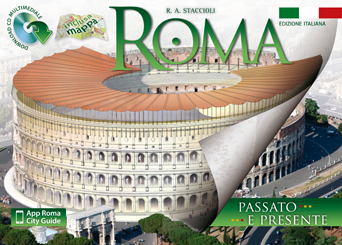
Do you want to know more about the history of the Pantheon and see how it was originally during the roman empire?
Check out our guidebook to Rome, with detailed history and Past & Present images of the Pantheon, the Colosseum, Trajan’s Market and all the greatest historical and archaeological sites of the eternal city.
Useful information:
Address: Piazza della Rotonda
Website: www.polomusealelazio.beniculturali.it/index.php?it/232/pantheon
Phone: +39 06 68300230
Opening and closing times:
- Daily 9:00 am to 7:00 pm
- Sunday 9:00 am to 6:00 pm
- Midweek holidays 9:00 am to 1:00 pm
- Closed December 25, January 1
- Last entry 15 minutes before closing
Notice: Opening and closing times are just an indication and they could vary. Check on the Pantheon website the actual opening and closing times for the days of your visits.

